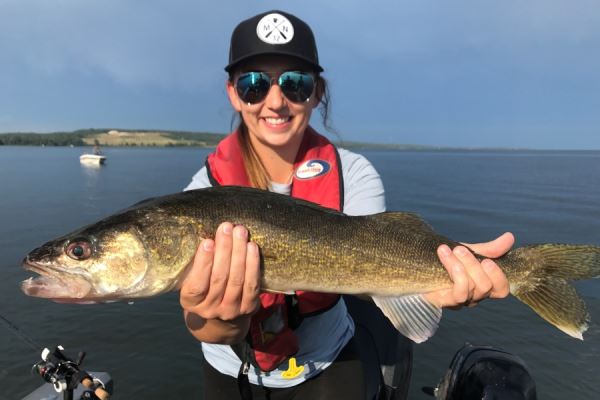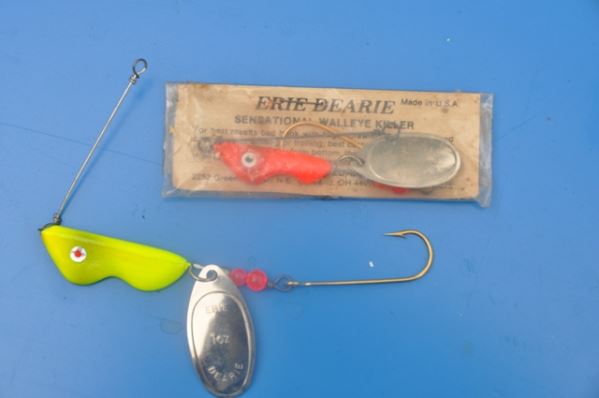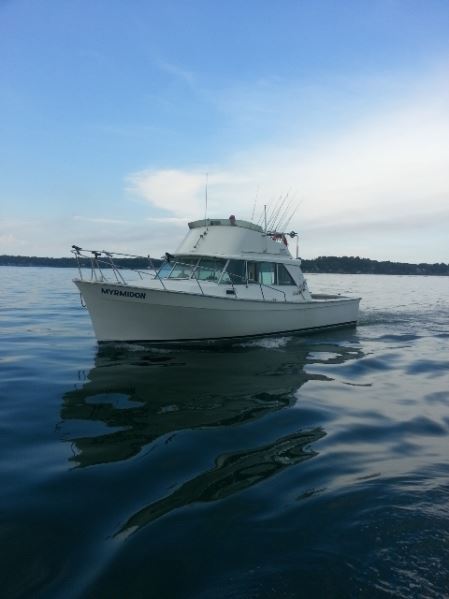 I was humbled on my first attempt at drift and cast fishing for walleye. It was decades ago and I had just moved into my role as editor of Great Lakes Fisherman magazine following an extended stint in the Florida Keys after which I considered myself an accomplished angler. I had worked on dive boats, lobster boats, commercial long-line boats and charter boats – as well as my own boats – gaining angling experience and enough ‘water days’ to qualify for my Master Captain credentials from the USCG. After all that blue water and flats fishing experience in the “sportfishing capital of the world,” I figured tackling Great Lakes fishing would be a quick study.
I was humbled on my first attempt at drift and cast fishing for walleye. It was decades ago and I had just moved into my role as editor of Great Lakes Fisherman magazine following an extended stint in the Florida Keys after which I considered myself an accomplished angler. I had worked on dive boats, lobster boats, commercial long-line boats and charter boats – as well as my own boats – gaining angling experience and enough ‘water days’ to qualify for my Master Captain credentials from the USCG. After all that blue water and flats fishing experience in the “sportfishing capital of the world,” I figured tackling Great Lakes fishing would be a quick study.
A walleye charter fishing trip on the Western Basin of Lake Erie with co-workers put me in my place. Granted, the other guys aboard had some experience with the traditional fishing method, but I never did catch on to fishing the swing, dead-sticking and other drift and cast basics that had everyone but me putting walleye in the cooler that August afternoon.
To be honest, I still haven’t mastered the technique, one that a veteran drift and cast charter captain has been practicing – and teaching – for more than three decades.
Captain Carole Vukmer of Myrmidon Fishin’ Ful Charters out of Port Clinton, Ohio, assures me that the classic Lake Erie tactic will work on any Great Lakes waters where walleye are found in 40 feet or less of water.
Growing up in Saegertown, Pa., just south of Erie and its namesake Great Lake, Vukmer hunted and fished and caught the walleye bug when she moved to Cortland, Ohio, near Mosquito Lake. One of the state’s few inland waters that supports a walleye population, it taught the accountant much of what she needed to know to prepare her for her second career as a fishing guide. She and her ex-husband, a charter boat captain himself, purchased a 35-foot boat in 1981 which she crewed on until 1987, when she earned her captains credentials. “It was 52 guys and me taking the test that day,” she recalls with a smile. She commuted from Cortland, in northeast Ohio, until 1991 when she moved to the popular Western Basin fishing port full-time.
the walleye bug when she moved to Cortland, Ohio, near Mosquito Lake. One of the state’s few inland waters that supports a walleye population, it taught the accountant much of what she needed to know to prepare her for her second career as a fishing guide. She and her ex-husband, a charter boat captain himself, purchased a 35-foot boat in 1981 which she crewed on until 1987, when she earned her captains credentials. “It was 52 guys and me taking the test that day,” she recalls with a smile. She commuted from Cortland, in northeast Ohio, until 1991 when she moved to the popular Western Basin fishing port full-time.
“In those days, no one trolled [for walleye],” she explained. “Casting weight-forward spinners was all anyone did.”
The weight-forward spinner of choice in those days, and still the most popular among walleye anglers, was the Erie Dearie. It was invented by fellow Mosquito Lake angler and tackle shop owner Dan Galbancea, who also relocated to Port Clinton where his spinners soon earned the title, “The lure that made Lake Erie the walleye capital of the world.”
The drift and cast method is a basic one, which makes it all the more frustrating for one who can’t seem to master it. The technique calls for a breeze, brisk enough to develop what is called a “walleye chop,” but not too strong, for the tactic relies on the boat being broadside to the wind. The wind is called upon to keep the boat drifting and covering new water at a slow enough pace to allow the anglers’ baits to reach the fish and remain in the strike zone during the retrieve. Fishermen cast their nightcrawler-tipped spinners downwind and reel in just fast enough to keep the spinner blades rotating. Usually the skipper will ask each angler to cast and begin reeling in at a different time, using a count-down method based loosely on a sink rate of a foot per second. When one angler connects with a walleye, everyone moves to that “count” before reeling in and, if things go right, all aboard who stick with the count start catching fish. Usually.
.jpeg_600.jpg) The “catching” process starts with finding fish, which Vukmer and her skipper peers do by noting the locations of walleye schools from previous fishing days or with intel from friendly fellow captains, and using sonar to find concentrations of fish. At that point, anglers have the choice between trolling or drift-and-casting to try to hook-up. A word to the wise: it’s important when talking to prospective charter captains to tell them which method you prefer; some dedicated drift-and-cast skippers would rather stay at the dock than “drag lures around,” as they refer to those who troll. Vukmer much prefers the classic method, but will accommodate trollers.
The “catching” process starts with finding fish, which Vukmer and her skipper peers do by noting the locations of walleye schools from previous fishing days or with intel from friendly fellow captains, and using sonar to find concentrations of fish. At that point, anglers have the choice between trolling or drift-and-casting to try to hook-up. A word to the wise: it’s important when talking to prospective charter captains to tell them which method you prefer; some dedicated drift-and-cast skippers would rather stay at the dock than “drag lures around,” as they refer to those who troll. Vukmer much prefers the classic method, but will accommodate trollers.
“We hope for suspended fish,” said Vukmer. “Walleye with their noses on the bottom usually are not active and feeding. Those suspended up in the water column are there to feed on baitfish or invertebrates, depending on the season.”
One popular invertebrate among hungry walleye is the larvae of mayflies, which in early summer emerge from the mud of the lake bottom and rise to hatch into mature mayflies upon reaching the surface. Along their ascent through the water column they are easy pickings for feeding fish. With the rise in water of the Great Lakes has come a rise in mayfly populations, leading to the development of another type of spinner for fooling walleye, called the “mayfly rig.”
Fished the same way as the weight-forward types, mayfly rigs feature a weight atop a 2- to 3-foot leader that trails a hook, beads and spinner combo on the working end, tipped with a piece of worm. The rigs were designed to mimic rising mayfly larvae and, while available commercially, most avid anglers and charter captains, such as Vukmer, tie up their own, adding their own custom touches.
“I use two hooks in the spring and a single hook on my spinners when fishing in the summer and fall,” she said.
“Why?” I asked.
“We catch and release a lot of young walleye late in the season and I don’t want to risk them swallowing a hook,” she answered, adding, “We have to look out for the future of this fishery.”
answered, adding, “We have to look out for the future of this fishery.”
Captain Carole Vukmer of Myrmidon Fishin’ Ful Charters
Captain Carole Vukmer operates Myrmidon Fishin’ Ful Charters featuring a classic Henrique built in 1980 in Toms River, NJ. The custom boat measures 35.5 feet in length, carries a 12-foot beam and as a demo built for boat show displays, is the only model built with a single diesel engine. It is docked at Anchors Away Marina in Port Clinton, Ohio, and can be chartered by up to six anglers who pay a total $660 for the day, which is a steal for anyone who wants to catch Lake Erie walleye the traditional way, aboard a classic boat skippered by a classy captain. Learn more at www.myrmidonfishinfulsharters.com or by calling 419-295-0636 or 419-295-0635.

